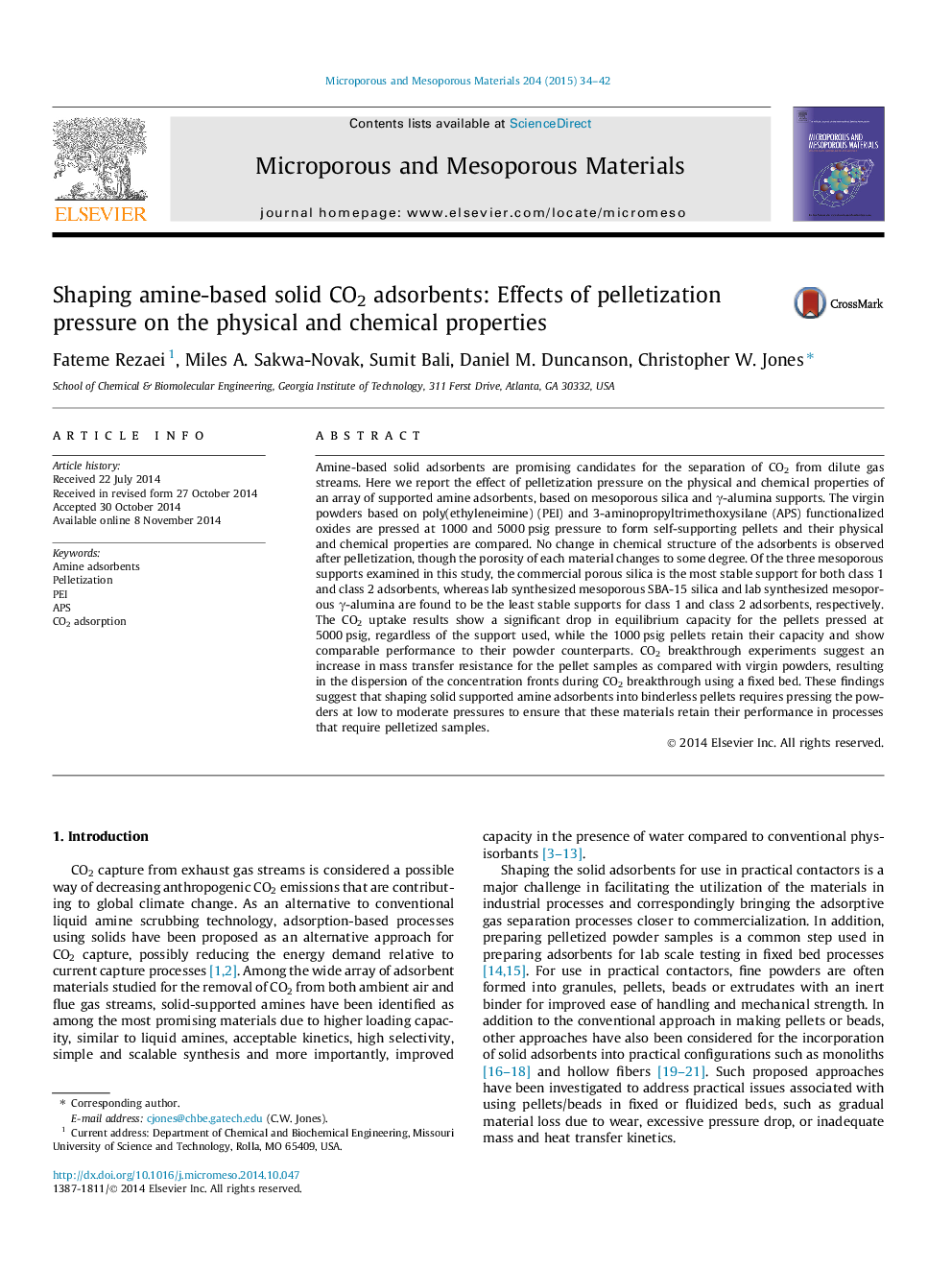| Article ID | Journal | Published Year | Pages | File Type |
|---|---|---|---|---|
| 72730 | Microporous and Mesoporous Materials | 2015 | 9 Pages |
•Pelletization effects on physiochemical properties of amine adsorbents assessed.•No change in chemical structure of the adsorbents is observed after pelletization.•CO2 uptake capacities drop for the pellets pressed at 5000 psig.•Increased internal mass transfer resistance for the pellets compared to powders.•Shaping solid amine adsorbents into binderless pellets requires low pressures.
Amine-based solid adsorbents are promising candidates for the separation of CO2 from dilute gas streams. Here we report the effect of pelletization pressure on the physical and chemical properties of an array of supported amine adsorbents, based on mesoporous silica and γ-alumina supports. The virgin powders based on poly(ethyleneimine) (PEI) and 3-aminopropyltrimethoxysilane (APS) functionalized oxides are pressed at 1000 and 5000 psig pressure to form self-supporting pellets and their physical and chemical properties are compared. No change in chemical structure of the adsorbents is observed after pelletization, though the porosity of each material changes to some degree. Of the three mesoporous supports examined in this study, the commercial porous silica is the most stable support for both class 1 and class 2 adsorbents, whereas lab synthesized mesoporous SBA-15 silica and lab synthesized mesoporous γ-alumina are found to be the least stable supports for class 1 and class 2 adsorbents, respectively. The CO2 uptake results show a significant drop in equilibrium capacity for the pellets pressed at 5000 psig, regardless of the support used, while the 1000 psig pellets retain their capacity and show comparable performance to their powder counterparts. CO2 breakthrough experiments suggest an increase in mass transfer resistance for the pellet samples as compared with virgin powders, resulting in the dispersion of the concentration fronts during CO2 breakthrough using a fixed bed. These findings suggest that shaping solid supported amine adsorbents into binderless pellets requires pressing the powders at low to moderate pressures to ensure that these materials retain their performance in processes that require pelletized samples.
Graphical abstractFigure optionsDownload full-size imageDownload as PowerPoint slide
